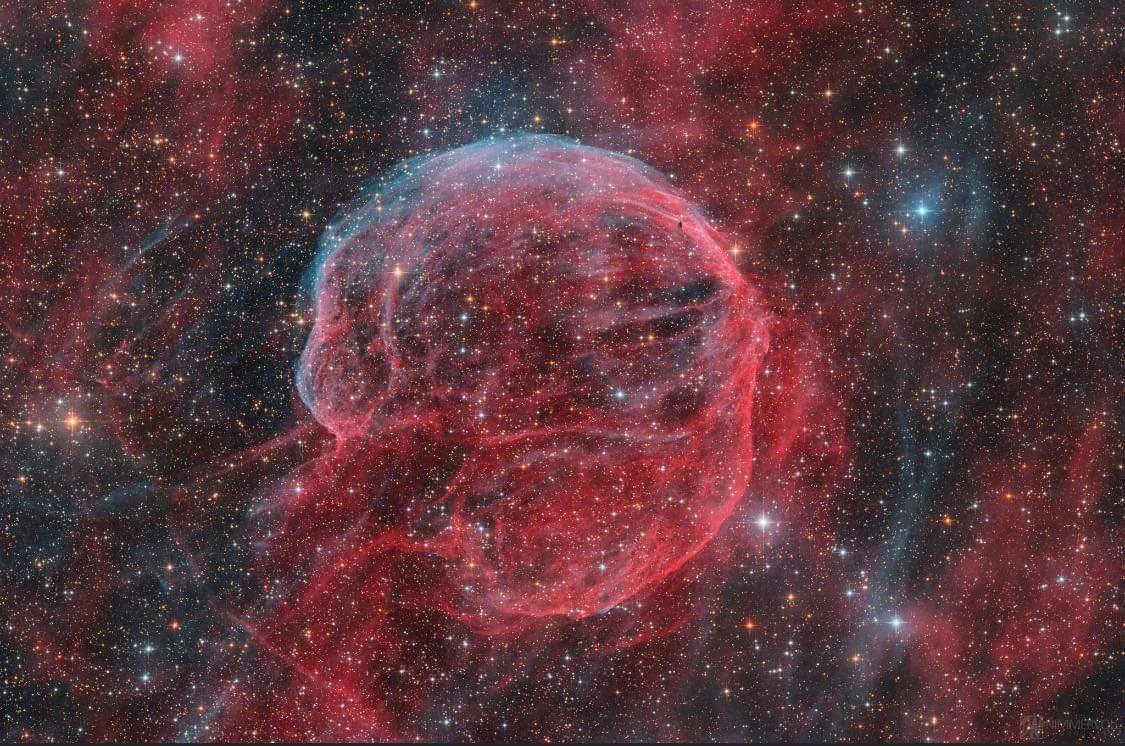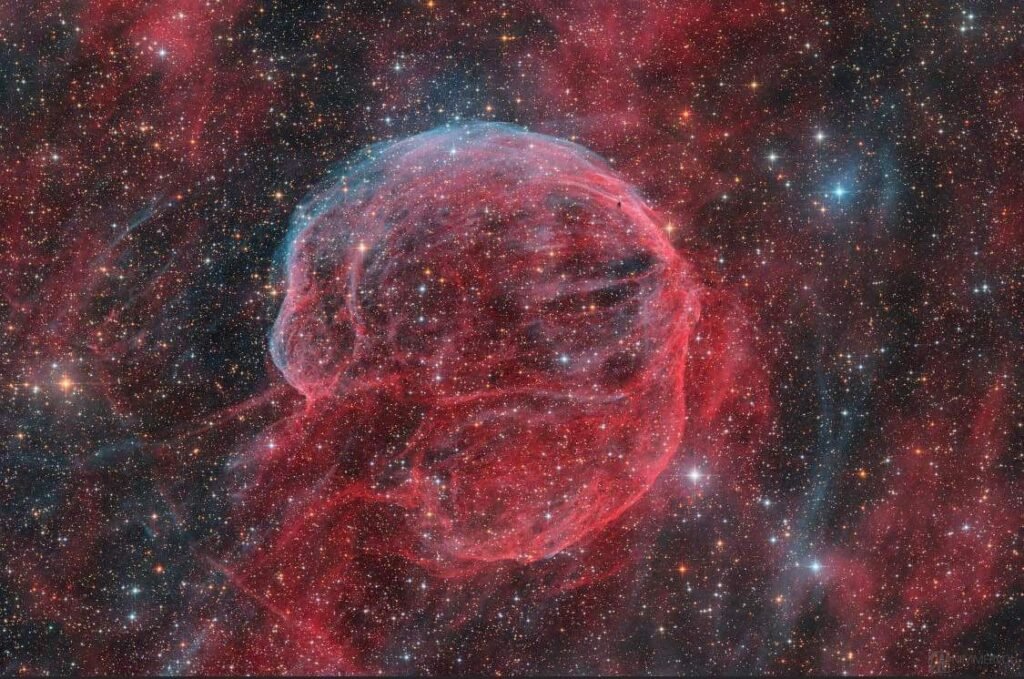
SNR G116.9+00.1 (also known as CTB 1 and AJG 110) is a supernova remnant (SNR) in the constellation of Cassiopeia. Its distance is not known with accuracy, so estimates range between 8,800 and 11,000 light-years. It was discovered in 1960 during a radio survey.
Observations revealed that SNR G116.9+00.1 is an oxygen-rich remnant. In terms of its morphology, it is classified as a mixed remnant. Thus, in radio, it appears as a shell-like SNR, while in X-rays, it’s a compact one. Data analysis suggests that the progenitor star had a mass of 13-15 solar masses. Astronomers estimated that the star exploded 10,000 years ago. However, its age can be as high as 16,500 years.
Finally, it is believed that the pulsar PSR J0002+6216 is associated with SNR G116.9+00.1. Its proper motion and motion direction support the latter. The pulsar moves at a high speed (i.e., 1,000 km/s). So, it probably resulted from an inhomogeneous explosion.
Image: Composite optical image of SNR G116.9+00.1 taken with a small amateur telescope. It was created using broadband filters (RGB), together with narrow band filters that are focused on the emission of ionised oxygen ([O III]), ionised hydrogen (Hα), and ionised sulphur ([S II]).

Leave a Reply